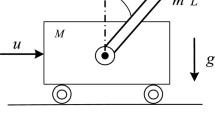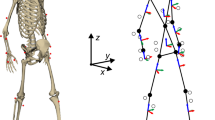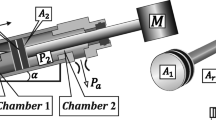Abstract
This paper presents the mechanism and control design of a micro-motion stage, which employs the right-angle flexure hinges and piezoelectric actuators (PZT). Aiming at the mechanism with the characteristics of a large stroke and three degrees of freedom, analytical models of statics and dynamics are established; especially the coupling motions of stage are investigated, which are verified by finite element analysis simulation. Via open-loop experiment, the decoupling property is well certified. Owing to the hysteresis of PZT, the dynamic equation of system with Bouc–Wen hysteresis model is proposed, which is identified through the Least squares. Moreover, a closed-loop controller of proportion integral derivative combined with the inverse hysteresis model-based feedforward is developed to reduce the nonlinearity and uncertainty, which can improve the positioning accuracy. Besides, the single-axis and multi-axis motions are tested. Experimental results reveal that the stage has a well-decoupling performance, and the effectiveness of proposed Bouc–Wen model is validated under open-loop control. Furthermore, the micro-motion performance in single- and multi-axis motions can be achieved as well.



















Similar content being viewed by others
References
Choi KB, Han CS (2007) Optimal design of a compliant mechanism with circular notch flexure hinges. Proc Inst Mech Eng Part C J Mech Eng Sci 221:385–392
Clark L, Shirinzadeh B, Bhagat U, Smith J, Zhong Y (2015) Development and control of a two DOF linear–angular precision positioning stage. Mechatronics 32:34–43
Dong R, Tan Y, Xie Y, Janschek K (2016) Recursive identification of micropositioning stage based on sandwich model with hysteresis. IEEE Trans Control Syst Technol 25:317–325
Howell LL (2013) Compliant mechanisms. 21st Century Kinematics. Springer, London, pp 457–463
Jiang Y, Li TM, Wang LP (2015) Stiffness modeling of compliant parallel mechanisms and applications in the performance analysis of a decoupled parallel compliant stage. Rev Sci Instrum 86:095109
Kim JH, Kim SH, Kwak YK (2003) Development of a piezoelectric actuator using a three-dimensional bridge-type hinge mechanism. Rev Sci Instrum 74:2918–2924
Kim YS, Yoo JM, Yang SH, Choi YM, Dagalakis NG, Gupta SK (2012) Design, fabrication and testing of a serial kinematic mems xy stage for multifinger manipulation. J Micromech Microeng 22(22):85029–85038
Kuhnen K (2003) Modeling, identification and compensation of complex hysteretic nonlinearities: a modified Prandtl-Ishlinskii approach. Eur J Control 9:407–418
Li Y, Huang J, Tang H (2012) A compliant parallel XY micromotion stage with complete kinematic decoupling. IEEE Trans Autom Sci Eng 9:538–553
Lin CJ, Yang SR (2006) Precise positioning of piezo-actuated stages using hysteresis-observer based control. Mechatronics 16:417–426
Lin C, Wu Z, Ren Y, Yu H (2016) Characteristic analysis of unidirectional multi-driven and large stroke micro/nano-transmission platform. Microsyst Technol 23:3389–3400
Lin C, Shen Z, Wu Z, Yu J (2018a) Kinematic characteristic analysis of a micro-/nano positioning stage based on bridge-type amplifier. Sens Actuators, A 271:230–242
Lin C, Shen Z, Yu J, Li P, Huo D (2018b) Modelling and analysis of characteristics of a piezoelectric-actuated micro-/nano compliant platform using bond graph approach. Micromachines 9(10):498
Ling M, Cao J, Jiang Z, Lin J (2017) Modular kinematics and statics modeling for precision positioning stage. Mech Mach Theory 107:274–282
Liu P, Yan P, Zhang Z (2015) Design and analysis of an X–Y parallel nanopositioner supporting large-stroke servomechanism. Proc Inst Mech Eng Part C J Mech Eng Sci 229:364–376
Razman MA, Priyandoko G, Yusoff AR (2014) Bouc-wen model parameter identification for a mr fluid damper using particle swarm optimization. Adv Mater Res 903:279–284
Shan Y, Leang KK (2012) Dual-stage repetitive control with Prandtl-Ishlinskii hysteresis inversion for piezo-based nanopositioning. Mechatronics 22:271–281
Shan MC, Wang WM, Ma SY, Liu S, Xie H (2012) Analysis and design of large stroke series flexure mechanism. Nanotechnol Precis Eng 10(3):268–272
Song G, Zhao J, Zhou X, Abreu-Garcia JAD (2005) Tracking control of a piezoceramic actuator with hysteresis compensation using inverse Preisach model. IEEE/ASME Trans Mechatron 10:198–209
Tian Y, Shirinzadeh B, Zhang D, Zhong Y (2011) Modelling and analysis of a three-revolute parallel micro-positioning mechanism. Proc Inst Mech Eng Part C J Mech Eng Sci 225:1273–1286
Wang DH, Zhu W (2011) A phenomenological model for pre-stressed piezoelectric ceramic stack actuators. Smart Mater Struct 20(3):035018
Wei Q, Zhang C, Zhang D, Zhang CJ (2014) Sliding-mode control for piezoelectric actuators based on hysteresis observer. Key Eng Mater 609–610:1271–1276
Weibel F, Michellod Y, Mullhaupt P, Gillet D (2008) Real-time compensation of hysteresis in a piezoelectric-stack actuator tracking a stochastic reference. In: American control conference, pp 2939–2944, 11 Jun 2008
Xu Q (2013) Design and development of a compact flexure-based XY precision positioning system with centimeter range. IEEE Trans Industr Electron 61:893–903
Yeh TJ, Ruo-Feng H, Shin-Wen L (2008) An integrated physical model that characterizes creep and hysteresis in piezoelectric actuators. Simul Model Pract Theory 16(1):93–110
Zhang X, Zhang Y, Xu Q (2017) Design and control of a novel piezo-driven XY parallel nanopositioning stage. Microsyst Technol 23:1067–1080
Zubir MNM, Shirinzadeh B, Tian Y (2009) Development of novel hybrid flexure-based microgrippers for precision micro-object manipulation. Rev Sci Instrum 80:065106
Acknowledgements
This work is supported by the National Natural Science Foundation of China (No. 51675060) and the Fundamental Research Funds for the Central Universities (No. 106112017CDJPT280002).
Author information
Authors and Affiliations
Corresponding author
Additional information
Publisher's Note
Springer Nature remains neutral with regard to jurisdictional claims in published maps and institutional affiliations.
Rights and permissions
About this article
Cite this article
Lin, C., Yu, J., Wu, Z. et al. Decoupling and control of micromotion stage based on hysteresis of piezoelectric actuation. Microsyst Technol 25, 3299–3309 (2019). https://doi.org/10.1007/s00542-019-04501-4
Received:
Accepted:
Published:
Issue Date:
DOI: https://doi.org/10.1007/s00542-019-04501-4




